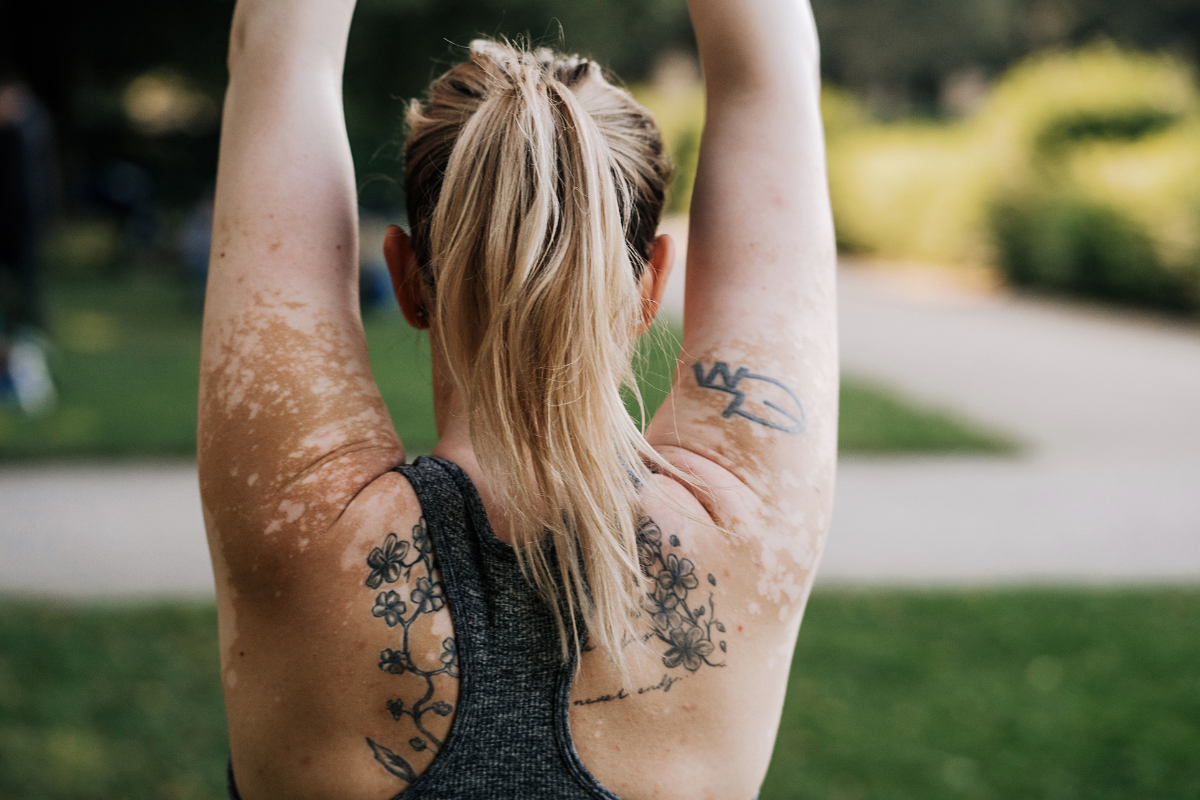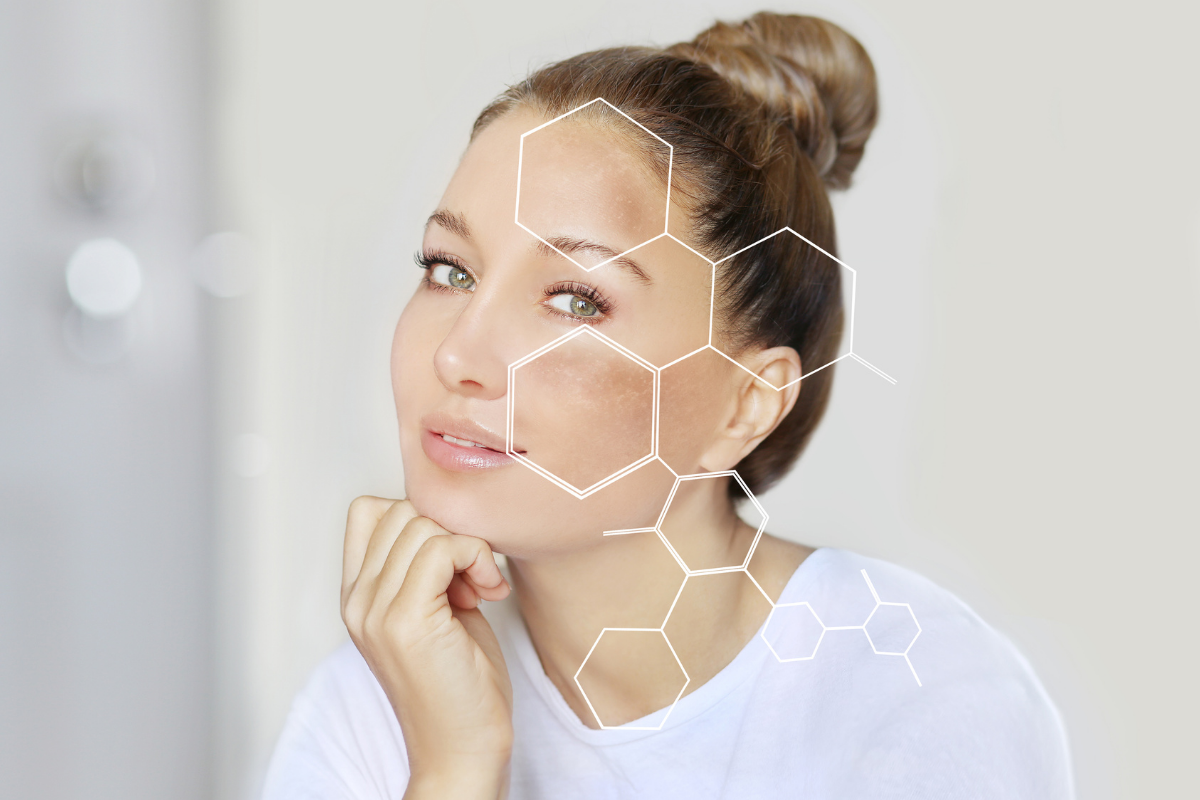Vitiligo and summer: how to protect from the sun?

Table of Contents
What is vitiligo?
Vitiligo is a chronic, non-contagious, condition in which some areas of the skin in various parts of the body are discolored , creating white spots. Beyond the skin, the mucosa inside the mouth, nose and eyeball, genitals, anus and eyelashes can be affected. If it occurs in areas with hair growth, the hairs acquire a white color. (1)
It occurs when cells that produce the pigment melanin (melanocytes) die or stop producing it. Melanin is the pigment that gives color to the skin, hair and eyes.
Unfortunately, however, it is not clear what exactly causes the death of these pigment cells. It may be related to immune system disorders (autoimmune condition) or to a family history (heredity) or even a simple event that triggered vitiligo such as extreme anxiety, sunburn or skin trauma. (2) (3)
There are two main types of vitiligo, the non-segmental and the segmental vitiligo. In rare cases, of course, vitiligo is likely to affect the whole body and then we refer to universal or full vitiligo. 9 out of 10 people have non-segmental vitiligo while at the same time it is the most common in children. (4)
Tips for sun protection
Vitiligo can sometimes cause other significant problems in our health. Due to a lack of melanin, our skin may be vulnerable to the effects of the sun, and for this reason we must be quite careful, keeping white spots with vitiligo safe from the sun. (2) (3)
1. Sun protection
It is very important, especially people with vitiligo, to apply sunscreen to all skin that is not covered with clothes. There is also a great variety with swimuits with UV protection.
The best thing, however, would be for the sunscreen to be applied 15 minutes before sun exposure, in order to be absorbed properly. Also in case we are several hours in the sun we need to renew the sunscreen (5):
- at least every 2 hours
- after we get out of the sea
- if we sweat enough
In order to achieve maximum protection, it would be better to opt for a sunscreen with a high protection index (SPF 30 and above), offer UVA/UVB protection (the label can sometimes indicate “wide range”) and most importantly be waterproof. (6)
2. Clothes that protect against UV
Clothes have an SPF, but they are not the same for all species. A denim shirt, for example, has a significantly higher protection factor than a white T-shirt. However, it is possible to strengthen the protection factor of clothes by adding a product that enhances the SPF during washing in the washing machine. (6)
One thing that should not be missing from our summer bag is a hat. Preferably be large and wide to cover the entire head, face and hair, as much as possible. (5) (7)
3. Shady place
In addition to clothes, hat and the use of sunscreen, it is very important that people with vitiligo look for a shady place to minimize their exposure to the sun. This way unpleasant consequences will be avoided, which can affect health. (5)
4. Avoid solarium
Because the skin in the white spots has lost the pigment, exposure to the lamps, used for the solarium, can aggravate the problem. It is most likely that the skin will burn and then white spots may appear in more parts of the body. (2) (6)
5. Avoid tattoos
Many people in their effort to cover their problem, choose to get tattooed. The tattoo, however , hurts the skin and the area in which it is done, so it would be good to avoid in the areas with white spots. It has been shown that in such cases, after an interval of 10-14 days, it is possible to appear new white spots in other parts of the body. (6)
6. Covering products
There are several products, which can help cover the white spots of the body without risk. Self-tanning products, dyes or makeup products (e.g. concealer) with SPF and color, can be used to temporarily cover vitiligo without affecting the skin. (5) (6)
Summarizing all the above, it is understood that people with vitiligo need to protect their skin from sunlight but the main thing is to cover white spots.
In Vita4you.gr will find a wide variety of sunscreens suitable for every occasion!
Bibliography
Disclaimer
The content of this blogspot is not and can not be considered as medical advice, diagnosis or treatment. All information is provided to readers solely for informational purposes. There is no intention to substitute this content for personalized medical advice, diagnosis, prognosis or treatment.




Leave a comment